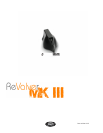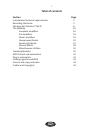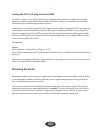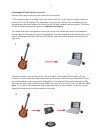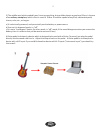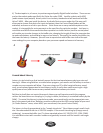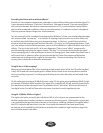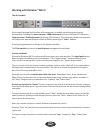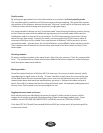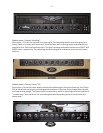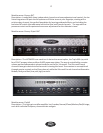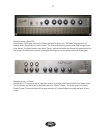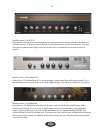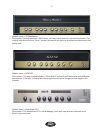
RecordingtheGuitarwithorwithouteects?
Should you use hardware compressors, distoron or other eects before you record the signal? It
is your personal preference. If you can’t live without “that special sound,“ then you should prob-
ably record it that way. But when it comes to compression, EQ, reverb and other special eects
that could be produced in soware, then you should produce it in soware and not in hardware.
That way you can always change your mind aerward.
To truly access all of the incredible tone shaping that ReValver® allows, you should take advantage
of a process called “re-amping.” In a nutshell, re-amping simply means to record the Guitar dry
as and then use the ReValver plug-in to change the tones. In this way, you will have unlimited
access to all of the amazing tones ReValver can oer. Of course, as in the paragraph above, if you
can’t live without a certain distoron tone, you can sll use ReValver’s eects modules as a rack of
eects. The sky is the limit and it’s all at your ngerps! There is one “eect” you generally
should use before sampling the signal, namely “liming.” It is a funcon which keeps the signal
from clipping digitally in case you happen to use a too strong signal. Some audio interfaces have a
so limiter built in; however, when you are recording a dry Guitar the presence of distoron
means you are sending too hot a signal to the computer. If you are recording a dry Guitar to
re-amp, there should be no distoron whatsoever.
Using16bitor24bitsampling?
Many sound cards today oer 24-bit sampling at high sample rates. While the CD audio standard
is only 16-bit and sll sounds quite good, it makes perfect sense to use as many bits as pos sible
during recording. In general, it is always good thinking to use more bits than you will need in the
very end.
16-bit audio gives you about 96 dB of dynamic range. 24 bits gives you an addional 48 dB. A high
gain preset in ReValver MK III amplies the signal a lot, probably 40 - 80 dB, and with those levels
you would start to hear the sound card “quanzaon noise” (bit noise). With more bits there is
less digital noise. You will sll hear electrical noise, but that is usually signicantly less.
Using44.1/48kHz,96kHzorhigher?
The higher the beer, normally, but in ReValver MK III, all vital parts are oversampled to the
double-sample rate to make sure there is a minimum of aliasing noise. Aliasing noise, simply put,
is an unpleasent background noise that can occur with any modeling soware or amplier when
the CPU is asked to do more than it can do. You should also consider that most good Guitar
sounds are very bandwidth-limited and you probably don’t need the high frequency range that
even 44.1kHz sample rate oers.
7



